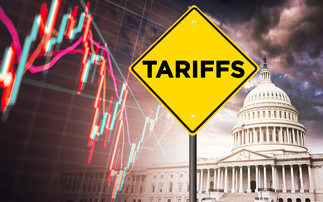
Key points
At a glance
- Proposals from the 2017 AE review are yet to be implemented, but were initially slated for the mid-2020s
- Reducing the qualifying age and lower earnings limit, as well as increasing contributions, are popular options
- But enhancing access to AE for gig economy and self-employed workers would also be a boost
October 2022 sees the tenth anniversary of auto-enrolment (AE). Despite its phenomenal success, with more than ten million people enrolled in a pension for the first time and low-opt out rates, the project is now stuck in a rut.
Indeed, the modest proposals in the 2017 AE Maintaining the Momentum review have yet to be implemented five years on.
Lane Clark & Peacock partner Sir Steve Webb, a former pensions minister, warns: "There is a real danger that we are now resting on our laurels. The 2017 AE review measures were sensible and the process of implementation should have begun at once - 2025 is simply too late, especially given that they are only incremental improvements."
Many UK workers are excluded, failing to meet the existing AE eligibility criteria as they are too young, too old, don't earn enough in a single job or are self-employed. Additionally, Aegon UK head of public affairs Kate Smith says: "Too many employees and their employers are saving at the 8% AE minimum." Yet virtually everybody in the pensions industry believes 8% is far from enough to provide an adequate retirement income.
Conservative MP Richard Holden has taken matters in his own hands with a Private Members' Bill to nudge things along following the Levelling up Pensions report by the think tank Onward. It estimated that abolishing the £10,000 earnings trigger for AE and the £6,240 lower earnings limit for pension contributions, alongside reducing the age threshold from 22- to 18-years-old, would give a full-time worker on the National Living Wage an extra £93,989 over a working lifetime, boosting millions of employees' pensions. Indeed, the report concludes: "The total additional savings could be as high as £2.77trn." But the bill stands little chance of further progress.
A Department for Work and Pensions spokesperson says the government hopes to abolish "the Lower Earnings Limit for contributions and reducing the age for being automatically enrolled to 18 in the mid-2020s". They continued: "We will do this in light of the impact of the pandemic and our overall support for economic recovery. Our approach will continue to support long-term saving, balancing the needs of savers, employers and taxpayers."
Runners and riders
When asked for their views on the most urgent reforms, experts cited cutting the qualifying age to 18 as the most popular. Canada Life technical director Andrew Tully, like many others, backed the move to start the saving habit as early as possible so "it just becomes the norm to contribute into your pension when you join the workforce, irrespective of age, type of employment or level of earnings".
Ingram's Insights chartered financial planner Kay Ingram points out: "Only 20% of under 22s in work currently have a pension. Earlier saving is particularly important for those who are employed in physically demanding jobs, who may wish to retire earlier than state retirement age."
The workplace world has changed dramatically since the advent of AE almost ten years ago, the biggest change being the increase in the numbers of gig-workers and those on zero-hour contacts.
With this in mind, Smith notes: "The time is ripe to overhaul the definition of ‘worker' to make it fit for today's modern working practices." She believes all workers, including gig workers, are entitled to workplace benefits such as an employer pension contribution.
Punter Southall Aspire director Alan Morahan adds: "While zero-hour contracts can suit some people and some employers, I think it's an area that has been exploited. The simple test of ‘if it looks like a worker and smells like a worker it's probably a worker' should prevail."
The area remains contentious, as Sackers partner Georgina Jones points out: "Given the rapidly evolving nature of the UK's workforce, even if the definition of worker were to change, it would not necessarily be clear in all cases who is in and who is out of scope. The Pensions Regulator (TPR) guidance, which keeps pace with further developments, is likely to prove more helpful in practice than constant legislative changes."
A glaring omission
There are around 4.5 million self-employed people in the UK, accounting for 15% of the UK workforce. Yet according to IPSE, just 31% are saving into a pension. One suggestion would be to divert some of the Class 4 National Insurance Contributions (NICs) to a qualifying scheme nominated by the individual on their tax return, believes Aries Insight co-founder Ian Neale.
Around two million self-employed people file a tax return each year. Webb adds: "It would be relatively straightforward to add a pension contribution to that calculation and a pension could be located to a provider from a ‘carousel' if no choice was made."
He says: "There could still be an opt-out," suggesting: "The government could offer a modest top-up, perhaps in the early years of the scheme, in order to get the idea established."
Sadly, WTW senior defined contribution (DC) consultant Rudi Smith stresses the realities from the coal face: "Asking the self-employed to stump up a year's worth of pension contributions at the same time as settling up with the taxman may be challenging."
He explains: "Because most employers do not offer cash alternatives to statutory minimum contributions, opting out means giving money back to your employer. Obviously, this reason to stay in the pension scheme does not apply to people who employ themselves! To create a situation where self-employed people got paid more if they saved in a pension scheme than if they chose not to, the government would have to offer them matching contributions. But that would amplify the existing favourable tax treatment of self-employment, which HM Treasury fears is eroding the tax base and distorting employment decisions."
Nest Insight has carried out pilot studies on what might work for the self-employed by, for example, nudging them to save when they receive a large payment.
A bigger risk to the self-employed is their inability to work due to sickness or accident but Morahan points out that the self-employed are not "mandated to take out sickness and accident insurance. In many ways, it should be a higher priority that a pension contribution."
Others who leave their employers to become self-employed don't realise they can continue to contribute to their old DC scheme - more education would also help here.
Time for a rise?
The current total AE of 8% will not produce a decent pension but the expense of any increase would add millions to the nation's wages bill. At the very least we could level up employer contributions from 3% until they match employee contributions at 5%. Webb enthuses: "If this was coupled with applying the rate from the first pound, then all workers would get 10% of pay into a pension, which would be a good starting point. This could be followed by ‘automatic escalation' of contribution rates when people then get pay rises." He has one caveat: "We should not start new workers at 18 or 22 on a high contribution rate (for example, more than 5% for the employee) as these risk them opting out and never starting on their pension journey."
Rudi Smith puts ballast to the argument in favour of higher contributions: "Changes that have occurred since the AE framework was put in place are likely to reduce retirement incomes - the new single-tier state pension produces smaller incomes than the old system, and a low interest rate environment weakens the effect of compound interest."
Even so, building consensus for a rate hike can take a very long time. Neale points to Australia "where the percentage was stuck at 9.5% for seven years but is now rising annually to 12% from 1 July 2025."
AE lacks flexibility around personal preferences and affordability. Indeed, Kate Smith urges an "open debate on whether employees can still benefit from an employer contribution, perhaps at a lower rate, if they opt out or can only afford to pay contributions at a lower rate."
Some employers have difficulty even paying the current contribution. TPR still has to use its enforcement powers often. The regulator's latest report shows it used its enforcement powers 77,000 times in six months. Neale comments: "Some of this undoubtedly results from deliberate evasion by employers; but it is also very likely that the sheer complexity of the process and the regulations results in incomplete compliance."
Woeful levels of engagement
It is not only employees who are not always engaged with their pensions but also some employers who are little more than Post Offices, forwarding contributions to a master trust which often then outsources the admin. Neale explains: "The worker might be given access to an online portal or platform, but the only communication they might receive about their pension is an annual statement: a statutory obligation for the provider."
He concludes: "So long as AE is viewed by all only as a matter of compliance with the law, the result will continue to be unsatisfactory for all parties. In a cost-based culture where price and not value has ruled, this is a challenge exacerbated by the current predilection for scale and consolidation."
Mutuality of interest between government, worker, employer and provider is vitally important when it comes to pensions but often paid just lip service. Unless this attitude is changed, the whole AE project could be undermined.
Stephanie Hawthorne is a freelance journalist and former editor of Pensions World







